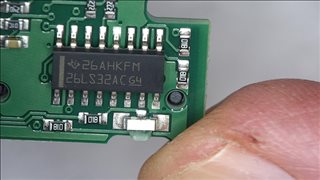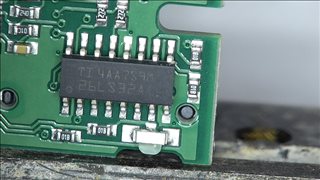Other Parts Discussed in Thread: AM26C32
Tool/software:
Dear Sir or Madam
We have received AM26LS32ACDR ICs from a supplier, which have a supply current of approx. 5mA instead of the previous delivery, which had a supply current of approx. 50mA. According to the data sheet, the typical supply current is 52mA.
In addition, the imprint is different, among other things only the lettering “TI” can be seen instead of the Texas Instruments logo.
Can you tell me whether there has been a change on your part that explains the lower current consumption? And can it be an original component if the Texas Instruments logo is missing?
Many thanks for your help.
Kind regards
Andreas Schormair


